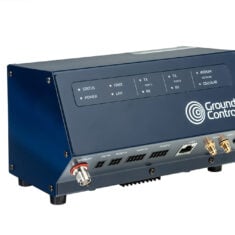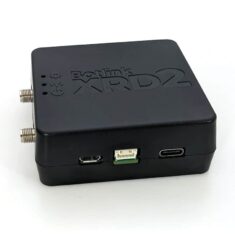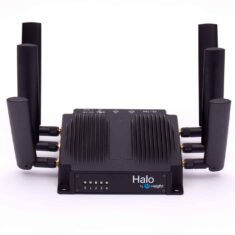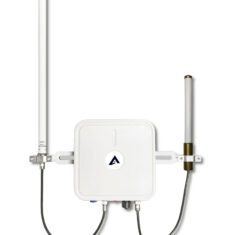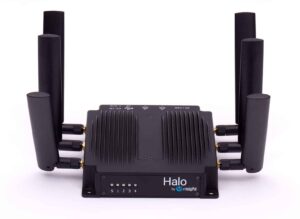
Elsight’s Halo UAV LTE Communications System
LTE (Long-Term Evolution) and 5G, also known collectively as cellular or mobile communications, are wireless broadband standards that are used in a variety of communications technologies. 5G works on a different spectrum to 4G LTE, and delivers faster speeds and lower latency but requires a higher density of cellular towers.
Wireless communications are essential for drone command and control, as well as telemetry and payload data transfer. Many drone controllers that work using Wi-Fi or other radio-frequency (RF) communications are limited in range. While SATCOM drone communications work almost anywhere on the planet, the equipment can be bulky and suitable only for larger drone platforms.
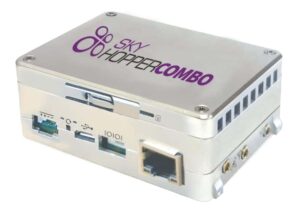
SkyHopper by Mobilicom’s SkyHopperCOMBO – LTE networking for Drones & Robotics
Cellular Drone Communications
Cellular drone communications have the potential to be the best of both worlds, as coverage in many areas is excellent and 4G/5G modems are relatively light and impact minimally upon the SWaP (size, weight and power) budget of many drones.
LTE Drone Tracking & Control
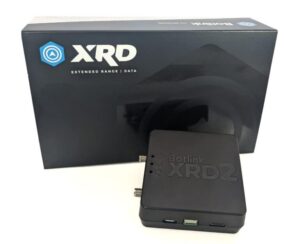
Botlink’s XRD2 4G LTE drone control for BVLOS operations
Drone LTE communications may enable BVLOS (beyond visual line of sight) operations and deliver the long-range and high data throughput requirements of many drone applications.
Potential use cases that may benefit from LTE connectivity include cargo delivery, precision agriculture, infrastructure inspection and public safety.
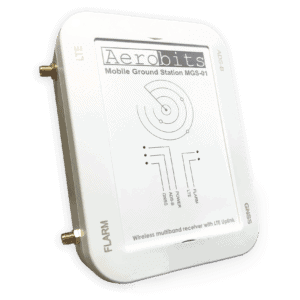
Aerobits’ All-in-one LTE/GNSS/ADSB/FLARM ground station
Potential issues with cellular drone communications include sparse coverage, particularly outside of urban areas, and instability as drones transfer from one network to another. Both uplink and downlink interference may also be a problem, due to drones being visible by multiple network cells due to their elevation. This problem could be mitigated with the use of steerable beamforming drone antennas that track the serving cell.
UAV connectivity solutions are available that take multiple SIM cards and can aggregate multiple connections from different providers into a single robust link. These systems may dynamically balance communications traffic among the different connections, optimizing for the needs of the drone according to varying network conditions.








